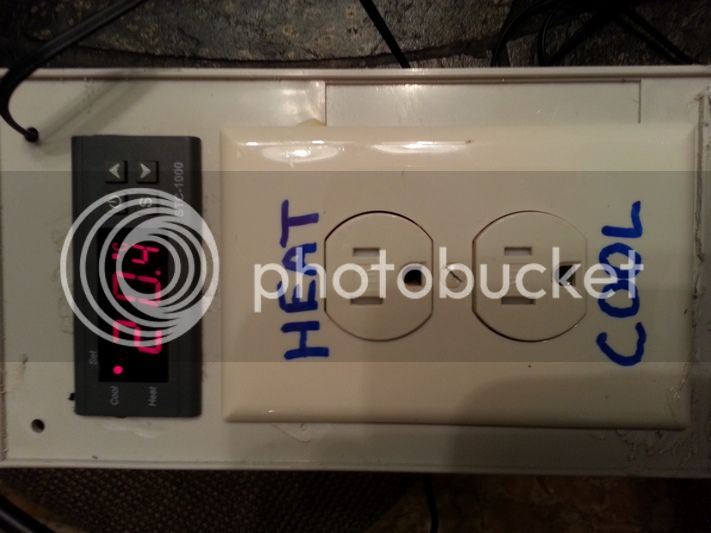xenomaniac
Well-Known Member
- Joined
- Jan 6, 2013
- Messages
- 99
- Reaction score
- 1
I just brewed my first batch of Pecan Porter and it's in the first stage of fermentation. This past week, the weather has been perfect keeping the house at a nice 72 - 74 Fahrenheit which is what the batch calls for. Just last night we had a cold front move in and dropped the temps in the house to 65 (35 outside). I live with a roommate and he doesn't like to use the heater in the house to save money (in which I agree with) so we each have our own space heaters.
I was out at work downtown when the cold front came in so I didn't get home till 3am. As soon as I got home though, I grabbed a bath towel and wrapped it around my fermentation bucket while the house thermostat stays at 65. I'm hoping this will keep it warm enough till I move to the second fermentation process in which I'm probably move it to my room where it stays a nice 72 - 74 degrees constantly.
One problem, I don't have a lot of room in my room. I've been looking online to look at ways to keep your batch warm for fermentation and I noticed someone suggested using an aquarium heater. My question is, for a brewer on a tight budget, is this a great idea or are there other things I can do to keep my temps exactly where they are suppose to be?
I was out at work downtown when the cold front came in so I didn't get home till 3am. As soon as I got home though, I grabbed a bath towel and wrapped it around my fermentation bucket while the house thermostat stays at 65. I'm hoping this will keep it warm enough till I move to the second fermentation process in which I'm probably move it to my room where it stays a nice 72 - 74 degrees constantly.
One problem, I don't have a lot of room in my room. I've been looking online to look at ways to keep your batch warm for fermentation and I noticed someone suggested using an aquarium heater. My question is, for a brewer on a tight budget, is this a great idea or are there other things I can do to keep my temps exactly where they are suppose to be?



